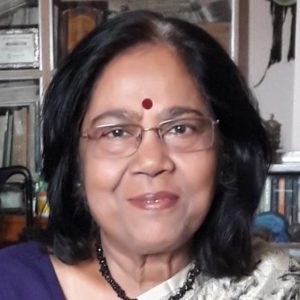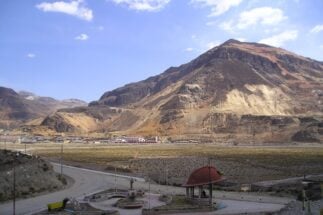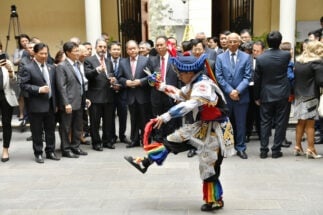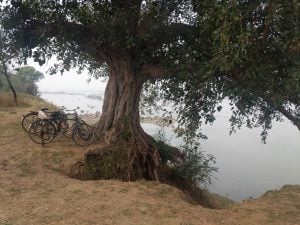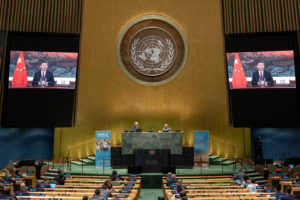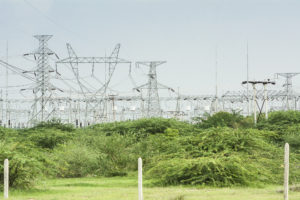“To strive, to seek, to find and not to yield” – Alfred, Lord Tennyson
Fifty years ago, a very determined group of six young women climbers set out on a big adventure to climb a peak in the Lahaul Himalayas. Most of us were in our early twenties. The leader Sujaya Guha, a keen climber, was in her early thirties. The other members were Kamala Saha, Nilu Ghosh, Shefali Chakraborty and Purnima Sharma. I was the deputy leader of the expedition. Sujaya and I had completed the basic and advanced courses at the Himalayan Mountaineering Institute, Darjeeling. We were both members of the Ronti Expedition (19,893 ft/6,064 metres) in 1967. Kamala had done an advanced course and the others had completed their basic mountaineering courses. Purnima was our doctor.
The aim of the expedition was to climb an unnamed virgin peak (20,130 ft/6,136 m) in the Lahoul Himalayas. If successful, we planned to name it Lalana, which means woman in Bengali. Before the expedition, we sought the advice of Robert Pettigrew, the famous British mountaineer and an authority on the region. He warned us that it was a dangerous and difficult peak. That made us even more determined. We were well trained and had a meticulous plan. If we could overcome hurdles and achieve success, it would be all the more satisfying. If we failed, we would try again with the experience gained from this expedition.
Suddenly, I found myself dangling on the rope. Looking down I could see a bottomless pit turning from deep blue to complete black.
![Lalana, a peak that has only been scaled once, was named by the expedition team 50 years ago [image by: Sudipta Sengupta]](https://dialogue.earth/content/uploads/2020/09/Photo-01-1-scaled.jpg)
The journey
On July 25, 1970, brimming with confidence and enthusiasm, we left Howrah station in West Bengal on the Kalka Mail train. We reached Manali in Himachal Pradesh on July 30 and met the director of the Manali Mountaineering Institute and the head of the Sherpa Guide School to arrange the necessary climbing equipment, sherpas, porters and mules. We hired Sherpa Pasang and Gyalgen and porters Palgun, Lama, Shering and cook Guptaram. Mules were hired to carry the expedition loads to our base camp at the snout of the Bara Shigri glacier. We bought the rations, groceries, vegetables and other food items and packed them in loads for the mules to carry.
![At the base camp, before the climb began. From left: Lama (porter), Shefali (member), Palgun (porter), Sujaya (leader), Pasang (Sherpa), Purnima (doctor), Nilu (member), Kamala (member), Gylgen (Sherpa), Gupta Ram (cook) [image by: Sudipta Sengupta]](https://dialogue.earth/content/uploads/2020/09/Photo-13.jpg)
Reaching the base of Bara Shigri glacier
Our journey for the expedition finally started from Manali on August 5. We got a lift in a truck up to Gramphu across the Rohtang Pass. At Gramphu, we left the Manali-Leh highway to take the road to Kaza which passes through Batal. After spending the night at a roadside shack in Gramphu, our trek started on the morning of August 6. By then the mules and their handlers had joined us. The route was along the northern bank of the Chandra river. The pathway proved to be a geologist’s delight as there was hardly any vegetation. We stopped at Chhatru and Chhotadara for night halts, trekking about 17 kilometres a day. The terrain was stark, rugged, desert-like but with a different charm. There were several mountain streams, small and big, running down the slope across the road. On the morning of August 8, we started from Chhotadara and crossed the Chandra river by a rope bridge.
The rope bridge was just a thick metal wire connecting two pillars on either side of river. We had to sit on an open swing holding a railing for dear life while this was manually pulled from one side to the other, as the fierce river raged below us. We crossed safely and trekked along the southern bank of Chandra and reached the confluence of Bara Shigri glacier. We crossed the glacier over the terminal moraine. By late afternoon we established base camp at 12,700 ft (3,871 m).
![Setting up Camp II at 17,000 feet in Lalana [image by: Sudipta Sengupta]](https://dialogue.earth/content/uploads/2020/09/Photo-02.jpg)
Base camp and advance base camp
The mule party had gone along the road to Batal and crossed the river over a proper bridge. This was a longer route as we had taken the shortcut. We expected them to arrive later but before dark. They did not arrive that night. Our tents, equipment and rations were with them. Fortunately, we had our sleeping bags, air mattresses and some food in our rucksacks. We had no option but to spend the night under the open sky. It was windy and very cold. Gradually with nightfall, the temperature dropped further. There was no firewood to light a fire. But we were happy and excited and did not worry. We huddled together and sang till midnight and then snuggled into our sleeping bags. Our roof was the clear night sky in all its magnificence with bright stars shining brilliantly like diamonds.
Journey to Camp
We were relieved when the mules arrived the next morning (August 9) and we set up the base camp. Sujaya, Kamala and I, with two sherpas, reconnoitred the route and proposed campsites, and for the next few days, unpacked and redistributed our loads. It started raining on August 11. Nevertheless Sujaya, Shefali, Kamala and I established the Advance Base Camp 1 (ABC1) at 13,100 ft (3,993 m). The rain continued but we decided to carry on and set up Advance Base Camp 2 (ABC2) at 13,700 ft (4,176 m) which faced the feeder glacier to Lalana (see: route map).
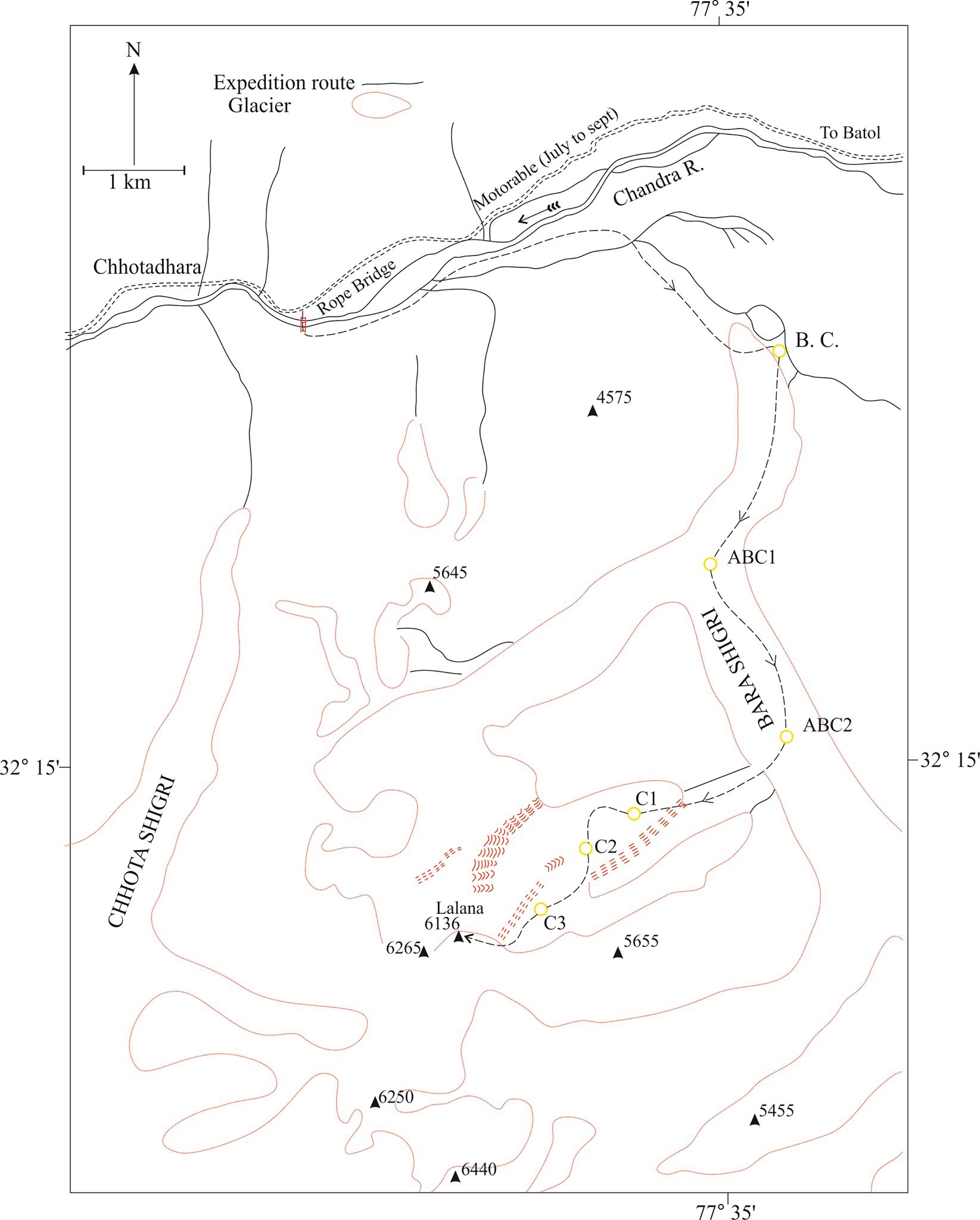
![map of feeder glacier to Lalana adapted from Google Earth [Image by Sudipta Sengupta]](https://dialogue.earth/content/uploads/2020/09/Trekking-route.jpg)
Being a geologist, I was observing the rocks. They were mostly of granite gneiss and quartzite with some conglomerates, quartzose mica schists and slates. At places, there were beautiful ice caves with small lakes with blue water. Over the next two days the weather turned worse. There was continuous rain with fierce winds. From our tents we could hear the noise of rocks falling from the adjoining mountains. Rainfall is rare in this region and the porters told us they had not seen so much rain in the past 10 years.
After two days the weather improved. August 15, Independence Day, was no holiday for us. We busied ourselves in preparation for higher camps. On August 16, Sujaya, Kamala, Gyalgen and Pasang established Camp I on the Lalana glacier at a height of 16,100 ft (4,907 m). On the same day Nilu and Purnima joined us from ABC 1. The next day Lama and I started for Camp I. After leaving the Bara Shigri glacier, there was a sheer rise of more than a thousand feet of a scree wall of loose rocks which led to the snout of the Lalana glacier. The next obstruction was a vertical ice wall which we negotiated with a fixed rope. After climbing the wall, we traversed another ice wall with a 70-degree slope for more than an hour. All along this path we had to negotiate the steep slope with the help of crampons and our ice axes. After this, the slope of the glacier eased but the going was slow because of knee-deep snow. We finally reached Camp I by late afternoon. Sujaya and Kamala greeted us with a cup of hot tea.
![Enjoying tea at camp III, 18,000 feet, with Kamala (left) and Sudipta (right) [image by: Sudipta Sengupta]](https://dialogue.earth/content/uploads/2020/09/Photo-03-scaled.jpg)
The difficult climb and success
On August 18, we started for Camp II. The going was tough and the altitude made breathing difficult. The gradient of the glacier gradually increased. As a result, the whole glacier was crisscrossed with crevasses, some wide and some narrow. Most of the crevasses were transverse, across the flow of the glacier. Some were crescent shaped, resulting from joining of two sets of shear fractures. The wide crevasses were difficult to cross but were visible. The narrow crevasses were treacherous as they were covered by snow-bridges and were not visible. They would collapse when one would step on them. We had to keep deviating from our route as going straight was impossible under the circumstances.
After an arduous journey we started looking for a site for Camp II. Not finding any suitable place, we selected to pitch our tents on a narrow ledge between two monstrous crevasses at 17,000 ft (5,182 m). As the width of the ledge was barely enough for one tent, we set up both tents along the length of the ledge. Given the precarious set-up, each time we went out of the tent we had to anchor ourselves with a rope. We spent a tense night wondering about our fate in case the ledge collapsed while we were asleep.
We were happy to get up in the morning and set out for Camp III. We roped up and started the climb. The weather was good but the route ahead was dangerous. Suddenly, I found myself dangling on the rope. Looking down I could see a bottomless pit turning from deep blue to complete black. I was second on the rope after Gyalgen followed by Sujaya. The snow-bridge bore his weight but collapsed when I stepped on it. Luckily, both Gyalgen and Sujaya secured themselves immediately and then pulled me up. This unnerved us a bit and we were more careful for the rest of the journey. We established Camp III, our final camp at 18,000 ft (5,486 m).
![The trekking was difficult, and the beauty of the landscape both terrifying and magnificent. The Lalana peak is in the backdrop [image by: Sudipta Sengupta]](https://dialogue.earth/content/uploads/2020/09/Photo-11.jpg)
August 20, 1970, my 24th birthday, was a gloomy day. The previous night was bad with howling winds and incessant snow. We rested in preparation for our next big day. On August 21, Sujaya woke us up at 2 am. It was still dark. After a breakfast of hot tea and biscuits, we started for the summit at 4 am. There was hardly any noise around except the crackling of the ice. Our peak, Lalana, was clearly visible on the horizon.
![The Lalana ascent [image by: Sudipta Sengupta]](https://dialogue.earth/content/uploads/2020/09/Photo-14-scaled.jpg)
It was beautiful outside, with soft moonlight bathing the mountains. After an hour of trudging through soft snow we had to climb a steep slope with exposed rocks, mostly slippery granite. We used fixed ropes to tackle this difficult part of the route. The crampons, which were faithful holds on ice, became a nuisance on rocks. This, however, was a much safer route than approaching the summit through the glacier. At places we had to do rock climbing using pitons. After an hour and a half, we reached the summit ridge and turned west towards the summit.
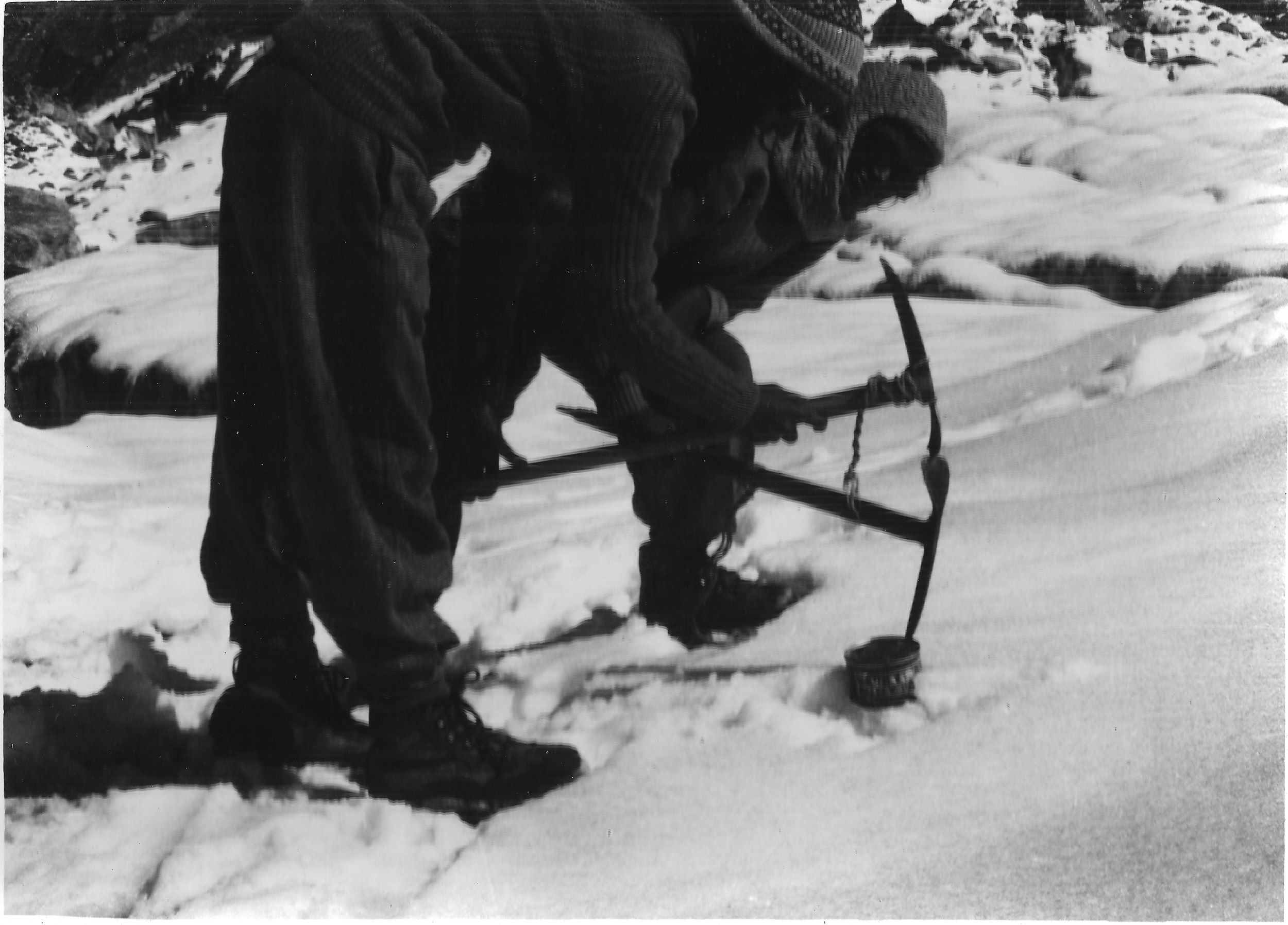
Just 500 ft below the summit we discovered that we had used all our five ropes. We carried on carefully, belaying each other. Ten feet below the summit, we all sat on a block of granite and rested for a few minutes. Then at 10.30 am we all went up together to the summit of our dear peak, Lalana.
We hugged each other and laughed, cried and talked. Finally we had reached the top!
We placed our flag and took photographs. We then put a piece of paper with our names in a water bottle and dug it in the ice for future summiteers to find. We just sat in silence to absorb the breathtaking beauty surrounding us. All around us we could see several ranges with shining ice-capped peaks rising majestically into the blue sky. To the west, there was a beautiful dome-shaped peak of about the same height as Lalana, joined by a razor-sharp ridge. There was an endless number of glaciers, frozen rivers of white ice flowing down between the mountain ranges.
We sat there mesmerised. It is a pity that I do not have any colour photos of this expedition, but the scene has been imprinted in my mind forever. After more than an hour at the top, we started to climb down. The return journey was far more difficult, especially the part without a fixed rope. Once we reached the fixed ropes, we all rappelled down, one by one. The rest of the path seemed long, dreary and endless. We recovered three ropes and left two in the mountains for use by anyone who came later. We reached Camp III at 5 pm and immediately collapsed into our sleeping bags. Very tired but happy, we slept like logs.
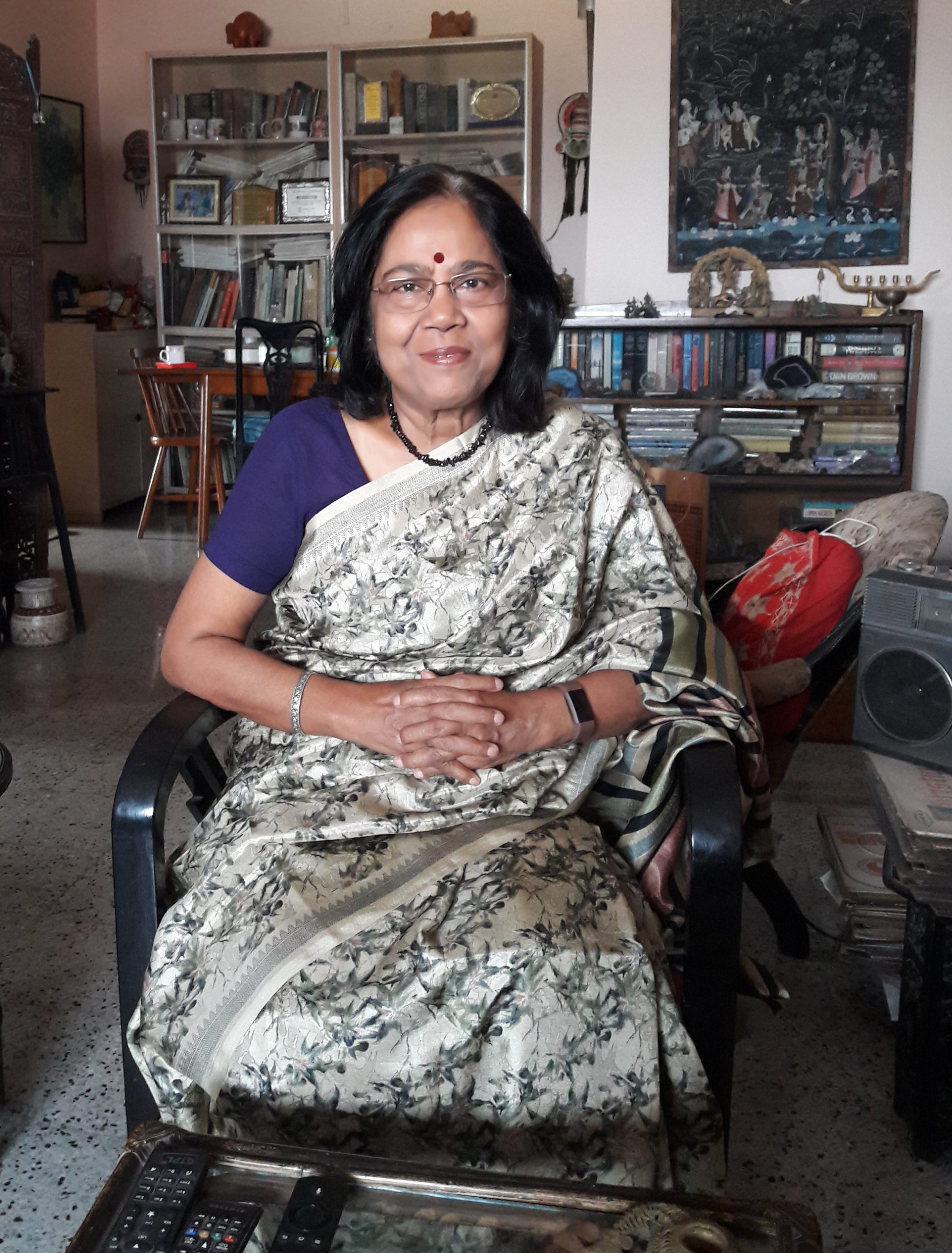
Tragedy
We came down to ABC2 by evening the next day. The three other members of the expedition were waiting anxiously for us. There was another round of celebrations with hot drinks and a real hot meal after many days. On August 23, we came down to the base camp and arranged a gala camp fire with our used cardboard boxes. Guptaram prepared a nice meal and we sat around the fire, our spirits high as ever. All of us sang, laughed and started to plan our next trip. We were anxious to return to civilisation and let the world know of our success. We planned the wordings of the telegrams to the mountaineering federation and our families. For this we had to return to Batal, the nearest post office.
On morning of August 24, Lama was sent to Batal to fetch the mules for our return journey. But he did not return. Next morning, instead of sitting at the camp, I utilised that day looking at the nearby rocks. Nilu and Purnima accompanied me. We came back around 2 pm and learnt that there was still no sign of Lama or the mules.
On August 26, Sujaya, Kamala, Shefali, Pasang and Gyalgen started for Batal at 9 am to fetch the mules. Nilu, Purnima and I finished packing and waited. They did not return by 6 pm so we assumed that all of them had reached Batal. The three of us were enjoying our evening tea.
At 6.30 pm Gyalgen arrived breathless and declared “Leader didi mor gayi” (our leader is dead). We were stunned and took some time to absorb the news. He was out of breath and could barely talk.
Finally, we gathered that at 12.30 pm they had all reached Karcha Nala, seven kilometres from our base camp and just one kilometre short of Batal. They found that knee-high ice-cold water was swirling down the slope creating a strong current. It was impossible to cross the stream at that point. The sherpas advised Sujaya and others to go back as it would be too risky to cross it without a rope at that time of the day. The sherpas climbed higher and crossed the stream where there were some big boulders and the stream was narrower. After getting the mules they returned and were crossing the stream at about 5 pm. They noticed a yellow windproof jacket downstream and got down from the mules to see what had happened. To their horror they found that it was the body of our leader. Gyalgen ran as fast as he could to reach us to break the news. Pasang was still looking for the others.
We were shocked. It was beyond our wildest imagination that after coming through such a perilous climb unscathed, this situation would arise when we were on our way home. We wanted to rush to the spot but were prevented by the porters as it was already dark. They said that they did not want another accident to happen. All the porters went out immediately to join Pasang to search for the two missing members, Kamala and Shefali. It was like living a nightmare. We prepared big torches with clothes soaked in kerosene and put them around the base camp, so that the flare could be seen from a distance. Purnima got ready with the first aid box.
Around 9.30 pm some of the porters came back with Shefali. We were very relieved to see her though she was soaking wet and had scratches all over her body, had no shoes and was shaking uncontrollably. Purnima took her inside the tent to give the necessary first aid. The porters informed us that they could not find Kamala. At our request they all went out again to search for her. They returned at 2.30 am in despair and empty handed. She was still missing.
In the meantime, we learned from Shefali that after the sherpas left, all three of them had sat at the bank of Karcha Nala till 2 pm. Then Sujaya suggested they would make a last attempt to cross the stream. The other two were reluctant but agreed when Sujaya told them that they would come back if it was too difficult to cross. Hand-in-hand they got into the ice-cold water. Sujaya went first, followed by Kamala and then Shefali. Shefali was the only one who was carrying an ice axe. Suddenly the ice axe slipped from her hand and she herself slipped. While being carried down by the swirling water she heard Sujaya shouting “ice axe, ice axe”. Then Shefali got stuck between two boulders close to the bank, collapsed and perhaps lost consciousness for a while.
When she regained her senses, she pulled herself out of the water with great effort. She looked around for the other two and found no one. She shouted for them but there was no answer. Dazed with pain, cold and wet, she started back towards the camp without any shoes as they had been washed away by the strong current.
A difficult return
Even after 50 years, it is difficult for me to write about that fateful night and the traumatic days that followed. Early morning next day, we returned to Batal, crossing the Karcha Nala with the help of a rope. We went straight to the police station. They started an immediate search for Kamala but to no avail. Her windproof jacket was found at the confluence of Karcha Nala and Chandra. It was concluded that she was carried away to the Chandra, a big turbulent river with tremendous force. The bad weather of the past few weeks had raised the water level and it had become immensely dangerous.
Everyone including the army, the Border Roads Organisation and other agencies were alerted and they started their own search for Kamala. A very different telegram to the one we had earlier planned and worded, was sent from Batal. With Sujaya’s body, we were taken to Khoksar that night through an unsafe route full of landslides. Everybody including the locals, police, administrators and the army were helpful and sympathetic.
It took us three days to hear from Kolkata, which too was experiencing bad weather. We learnt through the Ministry of Defence that Sujaya’s husband, Kamal Guha, who was a mountaineer himself, wanted her to be cremated in the mountains that she loved so much. The army carried out a ceremonial cremation for Sujaya at Stindri, a place near the confluence of Chandra and Bhaga. They also promised to look for Kamala along the Chandrabhaga and even beyond the border.
We came back to Manali under very different circumstances. On September 6, 1970, we returned to Kolkata without two members of our team to a tearful reunion with our families and friends. There was a tremendous sense of emptiness in me. Our remarkable success after the arduous climb of a difficult peak was overshadowed by the unexpected tragic turn of events. Not only had I lost two close friends but also my only companions with whom I had shared the most thrilling and adventurous days of my life. The only consolation is that we left them in their beloved mountains.
Sudipta Sengupta, a professor of geology, is a mountaineer, and was – along with Aditi Pant – the first Indian woman to set foot on Antarctica
![<p>The expedition to climb Lalana was an adventure that none of the people on it would forget; Sudipta (right) and Kamala [image by: Sudipta Sengupta]</p>](https://dialogue.earth/content/uploads/2020/09/Photo-08.jpg)
